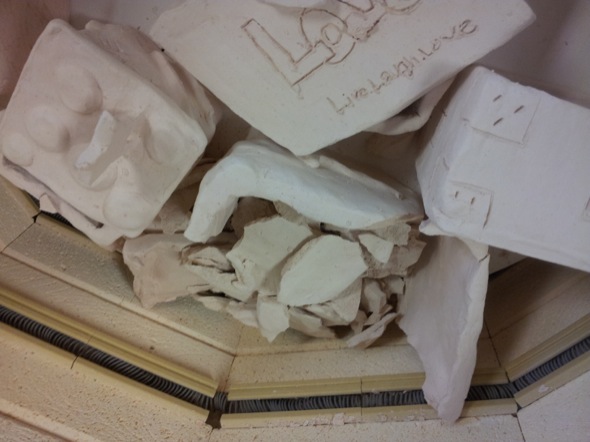My kiln is in the back of my classroom. Due to the smell from firing, I never fire the kiln when my students are present. I turn on the kiln at the end of the day. One day, I stayed after school to catch up on grading. After the kiln had been on for three hours, I heard it: the infamous popping sound coming from the kiln. I immediately knew what happened.
Someone’s clay piece, their precious artwork, exploded.
I ran through all the reasons how their clay project could have blown up.
Was it too wet?
Maybe there were too many air bubbles?
Was it my fault?
I immediately felt guilty. I probably didn’t let them dry out long enough. I thought I did…
Worst of all, what was I going to say to the student? How was I going to explain that the artwork they worked on for a week exploded? What if it hit another piece and that project exploded too? Luckily, in most cases, the students are able to remake their projects. If I’m pinched on time, I have them re-make them in air-dry clay. Is it the same? No. Does it give them a project to take home? Yes. Not to mention, it creates a learning experience for all of us.
Have you ever heard the awful popping sound from your kiln?
How do you handle situations when clay projects explode?
Magazine articles and podcasts are opinions of professional education contributors and do not necessarily represent the position of the Art of Education University (AOEU) or its academic offerings. Contributors use terms in the way they are most often talked about in the scope of their educational experiences.





